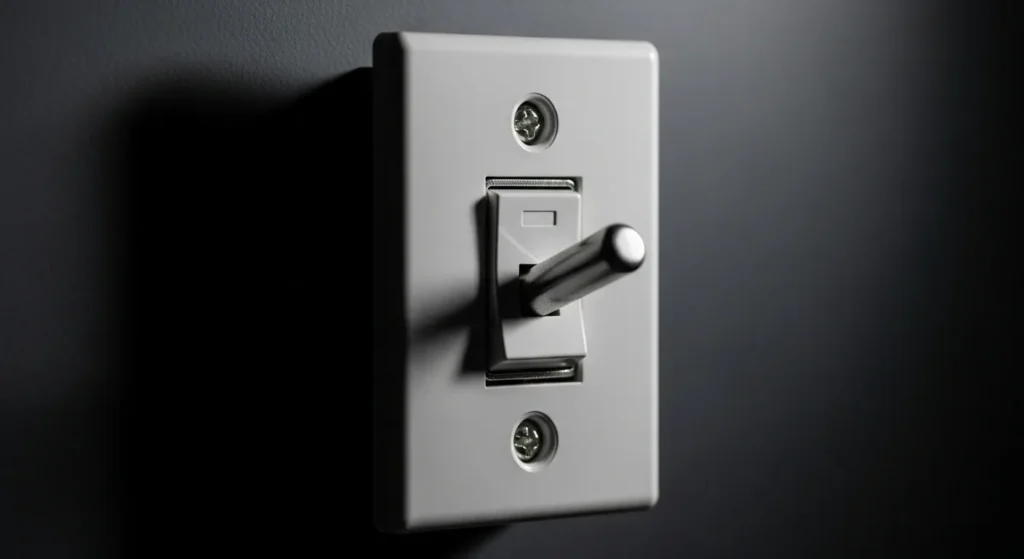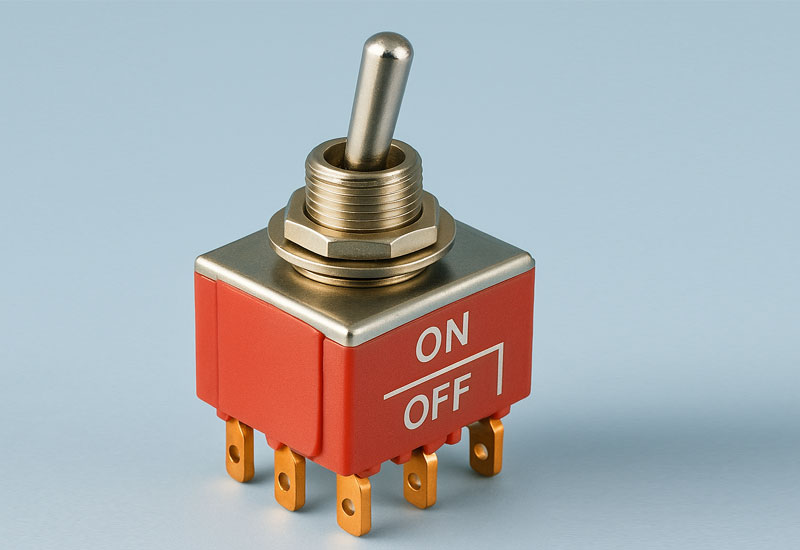How to Wire a 2 Way Switch
Let me take you on a little journey one that starts with flipping a light switch at the bottom of your stairs and ends with turning it off from the top without ever having to go back down. That’s the magic of 2 way switch wiring connection. It’s not just about convenience it’s about making everyday life a bit smoother. Whether you’re walking into a hallway, climbing a staircase, or entering a large room from either side, being able to control the lights from two places makes perfect sense.
But How Does it work?
Is it complicated? Should you try it yourself? And if so, what do you really need to know before diving in? Let’s walk through this together no jargon, no confusing diagrams just plain English and real-life examples.
What Exactly Is a 2 Way Switch?
You’ve probably seen them before those unassuming switches on the wall that look like any other. But here the twist they are part of a clever system that lets you turn a single light on or off from two different locations. Think of it like having two volume buttons on your phone one on each side. No matter which hand you use, you can adjust the sound without fumbling around.
How Does It Work?
Imagine you have two friends standing at opposite ends of a hallway each holding a switch. When both switches are flipped the same way the light turns on. Flip one of them differently and the light goes off. No matter where you are you can always toggle the light forward or backward top or bottom.
Technically speaking, the electricity follows a path between the two switches. In any 2 way light switch wiring diagram, you’ll see how one wire brings in power, two traveler wires connect both switches, and another goes to the light. A diagram of two way switch light wiring makes it clearer by showing the looped control paths visually. One wire brings in the power, two wires carry the signal between the switches and the final wire connects to the light. The switches essentially “flip” the direction of the current letting you control the circuit from either end.
You don’t need to be an electrician to understand this just imagine a train track that changes direction based on which lever you pull. Only in this case the train is made of electrons lighting up your hallway.
Why Would You Need This Setup?
If you’ve ever walked into a long hallway, turned on the light, and then stood there wondering how to turn it off again without walking all the way back, then you already know the answer. Two switches one light, or what many call 2 switches 1 light, is the practical solution. Then stood there wondering how you were going to turn it off again without walking all the way back, then you already know the answer. Two way wiring solve that problem beautifully. Here are some common situations where this kind of wiring comes in handy:
Staircases
Climb the stairs safely turn the light on at the bottom, and off when you reach the top.
Hallways
Turn the light on as you enter, and off as you exit no awkward walks back.
Bedrooms
Control the overhead light from the door and the bed. Perfect for lazy mornings or late-night bathroom trips.
Garages
Turn on the garage light from inside the house before heading out — and turn it off once you’re safely inside the car.
Offices & Commercial Spaces
Use multiple switches to control lighting in open-plan areas or shared spaces. The idea is simple: make life easier by giving yourself control from wherever you happen to be.
Wiring It Out: What You Need to Know
Now, let’s talk about the actual wiring. There are two main ways to wire a two-way switch:
The Three-Wire Method (Modern & Most Common) This method uses three wires:
- One connected to the live power source (phase)
- Two traveler wires connecting the two switches
- One final wire leading to the light (neutral)
Each switch has three terminals: COM (common), L1, and L2. If you’re studying a 2 way switch wiring diagram, these terminals are clearly labeled. Most 2 way electrical switch wiring setups rely on this configuration for flexibility and ease of use. Depending on how you flip the switches, the current flows through different paths completing or breaking the circuit as needed.
It’s like choosing which lane the electricity travels through left, right, or both. This method gives you full control from either switch and is the preferred option for most homes today.
The Two-Wire Method (Older Style)
Back in the day, people used only two wires for this setup. This older style of 2 way switch wiring is still found in some homes and is often shown in a connection diagram of two way switch for reference, but it lacks the smooth control of modern systems. It worked, but not as smoothly. It functions more like a toggle on-off-on-off depending on how many times you flip the switches. While simpler, it’s less flexible and harder to expand. That’s why modern installations usually stick with the three-wire method.

Can You Do This Yourself?
If you’re even slightly handy with tools and comfortable working with basic electrical systems, yes you can install a two-way switch yourself. But remember: electricity isn’t forgiving .
Before you start poking around in the walls, make sure you:
- Turn off the main power supply
- Use insulated tools and wear protective gloves
- Double-check everything before restoring power
- Never work in damp or wet conditions
- Don’t overload the circuit beyond its capacity
If you’re unsure at any point, stop and call a licensed electrician. It’s better to be safe than sorry.
Choosing the Right Switch
Not all switches are created equal. In India, some trusted brands offer high-quality two-way switches that work well in setups like 2 lights to one switch or 1 light two switches depending on your circuit design. that combine durability with safety. Here are a few options worth considering:

These switches come in sleek designs and are built to last. Choose one that matches your load requirements and aesthetic preferences.
Safety First: Don’t Skip the Basics
Even if you’ve done a few DIY projects before, never underestimate the importance of safety when dealing with electricity. Here are some quick tips to keep in mind:
- Always turn off the power before starting any wiring.
- Use a voltage tester to ensure no live current is running through the wires.
- Keep your workspace dry and organized.
- Avoid touching exposed wires or terminals.
- Ensure proper earthing and insulation.
- Never force a wire into a tight connection — it could cause overheating later.
Take your time. Rushing through electrical work can lead to dangerous mistakes.

Beyond Two Places: Multiway Switching
What if you want to control the same light from three or more locations? While a standard 2 2 way switch setup covers two locations, adding a crossover switch enables multiway control perfect for large spaces needing more than two access points. ? Enter multiway switching. This setup adds a third switch (called a four-way or crossover switch) between the two original two-way switches. It allows you to toggle the light from anywhere along the chain.
You can add as many of these middle switches as you need five, six, even ten points of control all managing the same light. It’s especially useful in commercial buildings, large hallways, or industrial settings where accessibility matters.
Troubleshooting Your Two-Way Switch
Sometimes things don’t work the way they should. If your two-way switch isn’t responding properly, here are a few common issues to check:
❌ Lights Won’t Turn On
- Check if the circuit breaker has tripped.
- Make sure all wires are securely connected.
- Test the bulb first — it might be burnt out.
❌ Only Works from One Side
- One of the switches may be wired incorrectly.
- Look at the connections and verify the traveler wires are linked properly.
❌ Flickering or Buzzing
- Loose connections or faulty wiring can cause flickering or buzzing sounds.
- Tighten all terminals and replace any damaged components.
❌ Light Stays On All the Time
- One of the switches might be stuck in the ON position.
- Replace the faulty switch or rewire the connections.
If you’re still having trouble, don’t hesitate to consult a professional.
Final Thoughts: It’s Not Just About the Light
Two-way switch wiring is more than just a technical detail it’s about making your home smarter, safer, and more convenient. Whether you’re installing it for the first time or upgrading an old system, understanding how it works puts you in control literally.
And if you ever feel overwhelmed, remember: every expert was once a beginner. So take your time, follow the steps, prioritize safety, and soon enough, you’ll be flipping switches like a pro from either end of the hallway.
FAQs: Quick Answers to Common Questions
Can I use a Regular Switch for Two-way Wiring?
No regular switches only have two terminals. You need a 2 way switch or a 2 way switch with three terminals (COM, L1, L2).
How many wires do I need?
Typically three: one live wire, two travelers between the switches, and a neutral wire to complete the circuit.
Can I control more than one light?
Yes — just wire the additional lights in parallel.
What’s the difference between two-way and dimmer switches?
A two-way switch controls the on/off state from two locations; a dimmer adjusts brightness. Some smart dimmers also support dual-control.
Can I convert a one-way switch to two-way?
Yes — but it requires adding another switch and rewiring the circuit accordingly.
Ready to Get Started?
Now that you’ve got a clear picture of how two-way switch wiring works, you’re ready to plan your own installation or upgrade. Remember knowledge is power and in this case it helps you stay safe and in control. Stay curious, stay cautious, and happy wiring!






